How To Secure A Time Lapse Camera?
In today's digital era, time-lapse photography has become increasingly popular. It allows enthusiasts and professionals to capture mesmerizing sequences of events over extended periods, be it the serene progression of a sunset or the bustling activity in a city square. However, the extended duration needed to accomplish such projects can expose equipment to various vulnerabilities. Securing a time-lapse camera thereby becomes essential to ensure your equipment remains safe, and your project proceeds seamlessly. This article will explore practical solutions aimed at addressing this necessity and will help you secure your time-lapse camera effectively.
Understanding the Risks

Before diving into securing a time-lapse camera, it’s crucial to understand the potential risks accompanying such endeavors:
1. Theft and Vandalism: Leaving a camera unattended for prolonged periods can make it an easy target for thieves and vandals.
2. Weather Exposure: Your camera might face unpredictable weather conditions, leading to potential damage.
3. Power Supply Issues: Extended operations require consistent power, which can pose a challenge.
4. Stability Concerns: Ensuring that the camera remains stable and in the same position is vital for cohesive time-lapse results.
5. Wildlife Interference: In wildlife-rich areas, animals might tamper with the equipment out of curiosity.
Understanding these risks sets the stage for a multi-faceted approach to securing your time-lapse camera effectively.
Equipment Choice
The first step in securing your camera is choosing the right equipment. Here are a few aspects to consider:
1. Durability: Opt for cameras known for their resilient builds and can withstand adverse weather conditions.
2. Portability: Light, compact cameras are harder to notice and easier to conceal.
3. Weatherproof Casings: Invest in high-quality weatherproof casings to protect the camera from dust, rain, and extreme temperatures.
Location and Placement
Proper placement and concealment can significantly reduce the risk of theft and vandalism:
1. Low-Profile Positioning: Place your camera where it’s not easily spotted. Avoid eye-level placements and choose less conspicuous spots.
2. Natural Camouflage: Utilize natural surroundings to hide your equipment. For example, placing the camera near bushes, behind rocks, or inside tree hollows.
3. Height Advantage: Positioning cameras at heights can deter tampering and theft. Use sturdy mounts or fixtures to secure the equipment properly.
Physical Securing Techniques
1. Secure Mounts and Tripods: Invest in robust mounts and tripods that are difficult to disassemble. Some mounts come with locking mechanisms that add an extra layer of security.
2. Cable Locks: Using cable locks to secure your camera and tripod to immovable objects can drastically reduce the risk of theft.
3. Security Boxes: Heavy-duty, lockable steel security boxes can encase your camera and prevent unauthorized access or theft.
Power Supply Solutions
Constant power supply is crucial for long-duration time-lapse photography:
1. External Batteries: High-capacity external batteries can ensure prolonged operations. Prefer rechargeable options to save costs in the long run.
2. Solar Power: In remote areas with ample sunlight, solar panels can provide a reliable and eco-friendly power source.
3. Power Banks: Portable power banks with substantial storage can act as viable backup power supplies.
Data Management and Transmission
Ensuring the safety of the captured data is as essential as safeguarding the camera:
1. High-Capacity Memory Cards: Use high-capacity memory cards to store longer time-lapse sequences. Ensure they are of high quality to prevent data corruption.
2. Remote Upload: If possible, set up remote data upload to cloud storage. This guarantees that your valuable footage is safe even if the camera is compromised.
3. Encrypted Storage: Utilize encryption for your storage devices to secure the data from unauthorized access.
Environmental Protection
Adapting your equipment to withstand environmental challenges is vital:
1. Weather-Sealing: Ensure that your camera has proper weather-sealing to protect against rain, dust, and other elements.
2. Temperature Regulation: Equip your setup with temperature regulation mechanisms, like small fans for cooling or heating elements to prevent condensation.
3. Protective Enclosures: Transparent protective enclosures can shield the camera against harsh elements while allowing it to function normally.
Remote Monitoring
Leveraging technology to monitor your equipment remotely can act as a preventive measure against theft and damage:
1. Surveillance Cameras: Installing a secondary, discreet surveillance camera to monitor the primary setup can provide real-time monitoring and evidence in case of tampering.
2. Motion Sensors: Motion sensors can alert you of unauthorized movements around your camera, prompting immediate action.
3. GPS Trackers: For high-value equipment, consider GPS trackers which can help locate your setup in case of theft.
Behavioral Measures
Adopting certain behavioral strategies can further bolster the security of your time-lapse camera:
1. Random Checks: Frequently but irregularly check your setup. This unpredictability can deter potential offenders.
2. Varied Timing: Stagger the setup and takedown times to avoid drawing attention to your routine.
3. Documentation: Keep a detailed log of your equipment, setup locations, and the times of setup and collection. This can be useful for insurance purposes and to track potential patterns in incidents.
Practical Experience
Learning from real-world scenarios can significantly enhance your security measures:
1. Case Studies: Study documented cases of time-lapse photography projects to understand the challenges and solutions they encountered.
2. Community Forums: Engage with photography forums and communities to gain insights and advice from seasoned professionals.
3. Workshops and Seminars: Attend workshops and seminars that focus on time-lapse photography and security measures.
Securing a time-lapse camera requires a comprehensive approach that covers equipment durability, strategic placement, physical securing methods, reliable power supply, effective data management, and proactive monitoring. By understanding the risks and employing a combination of technological solutions and behavioral strategies, you can ensure the successful and safe completion of your time-lapse photography projects. Always stay vigilant, adapt your methods based on the environment, and continuously seek out new information and technologies to improve your setup. With these steps, not only will your equipment be secured, but the quality and integrity of your time-lapse sequences will also be preserved.





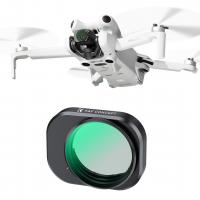

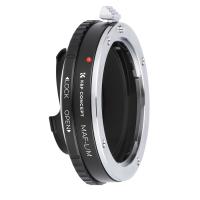



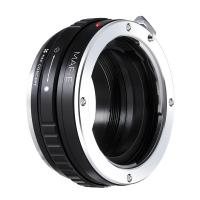
















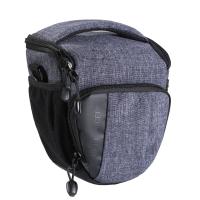






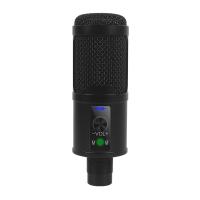






There are no comments for this blog.